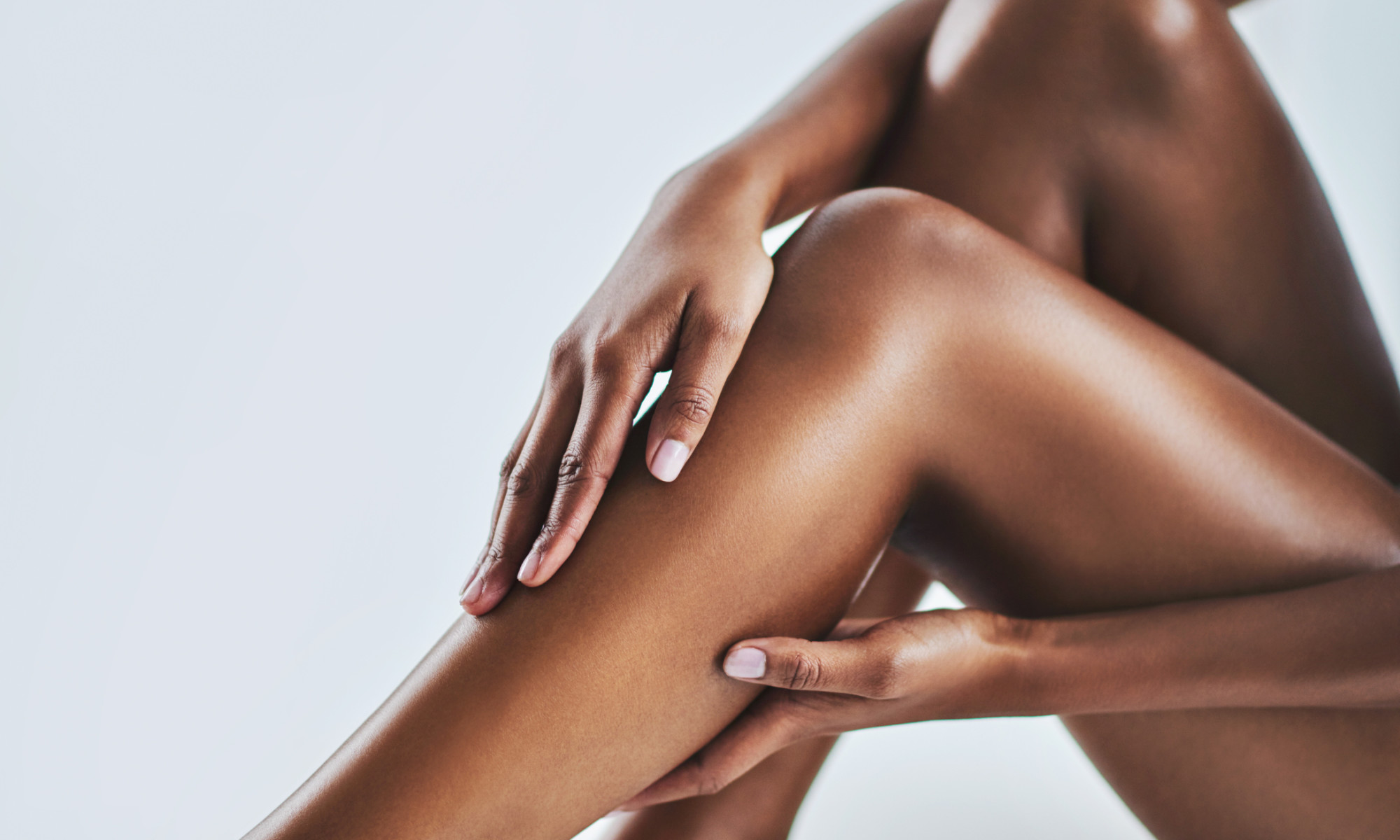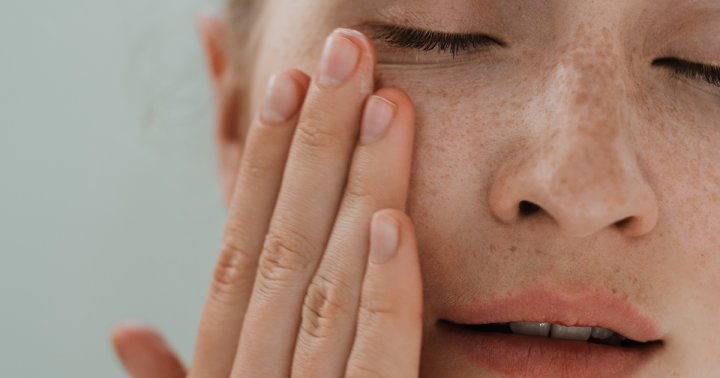Want Smoother, More Even-Toned Legs? Do This, Derms Say
*This* is the key to a truly smooth shave every time.


mbg Assistant Beauty Editor
mbg Assistant Beauty Editor
Hannah Frye is the Assistant Beauty Editor at mindbodygreen. She has a B.S. in journalism and a minor in women’s, gender, and queer studies from California Polytechnic State University, San Luis Obispo. Hannah has written across lifestyle sections including health, wellness, sustainability, personal development, and more.
Image by Delmaine Donson / iStock December 9, 2022 Our editors have independently chosen the products listed on this page. If you purchase something mentioned in this article, we may Whether you’re struggling with “strawberry legs” or you just want a better shave and a radiant glow, exfoliation can help. While there are plenty of products on the market to get you there, not all of them are fit for every person and skin type. So to follow, we created an expert guide to exfoliating your legs—from scrubs to serums to tools and more. Plus, a few reasons you might want to start exfoliating ASAP if you haven’t already. Happy buffing!
Advertisement
This ad is displayed using third party content and we do not control its accessibility features.
Scrubs are just one form of “manual” exfoliation—as opposed to chemical exfoliation, which we’ll cover next. Using a body scrub will help to physically lift excess dead skin and reveal a fresh canvas. Plus, it just feels great to connect with your body through hands-on massage. One perk of using a body scrub is that it’s typically done in the shower (read: extremely low lift). You can keep your favorite store-bought scrub right next to your body wash (a few mbg approved picks here), or make your own—we’ll share our go-to DIY recipe in a bit. Whether it’s store-bought or homemade, be sure to keep the granules fine. Many formulas use sugar and coffee, but regardless, “It is best to make sure the granules are small and smooth to prevent the scrub from being too abrasive on the skin,” board-certified dermatologist Marisa Garshick, M.D., FAAD tells mbg. While these scrubs may be beneficial for some, they’re not fit for everyone. “Those with sensitive skin should avoid harsh scrubs and loofahs,” Garshick says. So if you notice your scrub leaves behind redness or irritation, it might be too harsh. Instead, look to chemical exfoliants—up next. Alpha- and beta-hydroxy acids (commonly referred to as AHAs and BHAs) are two superstar ingredients for exfoliation. While you may be more familiar with them in facial skin care serums, there are plenty of chemical exfoliation body products out there, too. You should know that chemical body exfoliators are often way more potent: The skin on the body is thicker than the skin on the face, which is why exfoliating serums generally have a higher percentage of AHAs or BHAs. For general exfoliation, AHAs like glycolic, lactic, and mandelic acid will help to gently dissolve dead skin and brighten tone. Salicylic acid, on the other hand (which is oil-soluble), may help manage body breakouts while exfoliating. Even though ingredients like glycolic acid and lactic acid may sound intimidating, they can actually be a more gentle form of exfoliation than some body scrubs. In fact, for those with keratosis pilaris (KP) or “strawberry legs,” this form is preferred. “In general, mechanical exfoliation is not the best for KP and can even make it worse,” board-certified dermatologist and founder of MaeiMD Rebecca Marcus, M.D.,FAAD tells mbg. More on KP in a bit. This ad is displayed using third party content and we do not control its accessibility features. While retinol doesn’t technically exfoliate the skin, it does help to increase cell turnover, thus aiding in the process of brightening and smoothing. If you’re just as concerned about exfoliation as you are easing crepey skin, then a retinol body lotion might be a good addition to your routine. As shown in clinical studies, retinol treatment can stimulate collagen production1 and help decrease the appearance of wrinkling. Just as you would on your face, be sure to isolate your retinol product by using it on different evenings than you do an exfoliating serum or body scrub to avoid irritation. Think of it as skin cycling, but for the body. Dry brushing is a classic Ayurvedic ritual that involves brushing your full body with a special bristled tool. While there are common claims that dry brushing can clear cellulite or improve immune function, that hasn’t been scientifically proven. What we do know is that dry brushing is a form of physical exfoliation that can also increase circulation on the skin. However, it’s still up for debate whether you actually need to manually stimulate circulation (some studies show lymph pumps can improve lymphatic function2) or if simply moving your body is enough. Regardless, studies show that improved circulation is better for skin overall—no matter how you get things going. “Dry brushing can be useful as an exfoliating mechanism, but great care must be taken to make sure that the bristles are gentle enough that the skin is not being abraded,” Marcus explains. “Disrupting the skin barrier can lead to increased dryness and do more harm than good." Just like any form of manual exfoliation, be sure to find a dry brush that works for your skin—again, if your skin gets red and dry afterward, then you should probably switch to something more gentle. Here’s a bit more information about dry brushing, if you’re curious. And if you’re ready to invest, here’s a list of our top picks. This ad is displayed using third party content and we do not control its accessibility features. If you have sensitive skin or you simply want to skip extra exfoliation steps, then a classic washcloth is the best way to go. You can use a loofah as well, but a cloth is much easier to clean and tends to be a more sustainable option. You can even use a washcloth in conjunction with an exfoliating body wash or fine-grained scrub if you need some extra power. The exfoliating mitt might just be the easiest tool of all for a strong exfoliation, sans extra steps. All you have to do is slip the mitt over your hand (or grab the exfoliating pad), apply some body wash, and gently massage the body. These mitts are great for targeting smaller areas like the bikini line—but you must remember to wash them and let them air dry every few weeks. If your mitt never fully dries, it might start to collect bacteria and even grow mold. This ad is displayed using third party content and we do not control its accessibility features.Advertisement
Advertisement
Advertisement
Benefits of exfoliating the skin.
Apart from simply creating a smoother canvas, exfoliation has a lengthy list of benefits. Whether you opt for an AHA serum, dry brushing, or a body scrub, you can expect the following perks:
“With regular exfoliation, skin will look and feel smoother and more youthful,” medical esthetician and founder of JTAV Clinical Skin Care Joie Tavernise tells mbg.
Especially for those who shave their legs or remove hair in general, hyperpigmentation is always a risk. Luckily, exfoliation can help fade dark spots and post-inflammatory hyperpigmentation over time, contributing to more even-looking skin on the legs.
Advertisement
This ad is displayed using third party content and we do not control its accessibility features.
2.
Better penetration of topical moisturizers.
When your skin is clogged up with dead cells, it’s more difficult for your other products to penetrate (this is true for the whole body, not just the legs). So when you remove that buildup, your topical moisturizers can better penetrate the skin, thus making them more effective.
And remember: You should always apply a body lotion or body oil after you shower, especially if you’ve just exfoliated.
If you’re using retinol body cream, be sure to exfoliate the day before (again, classic skin cycling). This way the dead skin gets removed and the retinol can perform to its best ability on the skin.
As mentioned with dry brushing, exfoliation can help stimulate blood flow in the legs. Especially if you’re massaging the skin simultaneously (as with an exfoliating scrub or mitt), you’ll be manually moving around lymph fluid and aiding your body's natural detoxification processes.
4.
Reduced acne or ingrowns.
Those who are prone to ingrown hairs or leg pimples (yes, you can get zits on your legs) should be exfoliating regularly—and always do so before you shave.
"Gentle exfoliation can help [loosen] the free edge of hairs that may be trapped under the skin," board-certified dermatologist Joshua Zeichner, M.D. once told mbg. "This can give you a smoother shave and lower the likelihood of razor bumps or irritation."
If you’re more prone to breakouts than ingrowns, then opt for a salicylic acid exfoliating serum or body wash, as it’s also anti-inflammatory, antimicrobial, and can penetrate deep into pores.
5.
May help with "strawberry legs" and KP.
KP can show up in many places on the body, but it’s commonly found on the backs of the arms and legs. In order to reduce its appearance (no, it cannot be fully cured), look to chemical exfoliants.
“Exfoliation is one of the key treatments to help with keratosis pilaris, as it is often recommended to use an alpha-hydroxy acid, like glycolic or lactic acid, to help improve skin texture,” Garshick says.
Cautions.
If you have hypersensitive skin (read: even the simplest of formulas make your skin irritated), you should steer clear of exfoliation. You may be able to occasionally cleanse the skin with a soft washcloth, but be sure to keep the rubbing to a minimum and stop if your skin gets red or inflamed.
During a bout of eczema, dermatitis, or any other sensitizing skin condition, be sure to skip this step as well. Stick to nourishing and simple moisturizers instead. And perhaps this goes without saying, but you shouldn't exfoliate every single day.
How often should you exfoliate?
When it comes to exfoliation schedules, it all depends on your skin type. While those with dry or sensitive skin might want to stick with once a week, people with oily skin or those prone to ingrowns may need to exfoliate twice a week.
The upper limit is twice a week, Marcus says, especially if you’re new to exfoliation. If you want to focus on a smooth shave, then schedule your exfoliation one day prior. See here for more information on an exfoliating cadence.
A DIY body scrub recipe.
If you’re extra particular about your body scrub’s texture or ingredients, or you just want to save a few bucks, there’s a long list of natural ingredients at your fingertips. All you need is an exfoliant and a base oil. Here’s a quick summary of options to play around with:
If you take a look in your kitchen cabinet, you’ll probably find a few of the options listed below.
For those with sensitive skin, fine sugar and oats will be a better option. If you’re looking for a tougher scrub, then coffee grounds and even fine salt will do the trick.
Next, you’ll want to pick an oil to include in your body scrub. Here are a few trusty options:
Then all you have to do is mix your picks together until you reach a consistency you love. That's it! Now, if you want a body scrub that feels more like a paste, you can even use shea butter or raw coconut oil as your base. For more detailed recipes and steps, check out this DIY breakdown.
Best leg exfoliation products
FAQ
Do you exfoliate when wet or dry?
It depends on what kind of exfoliation product you use. A dry brush should be used on dry skin, while body scrubs should be used in the shower. Chemical exfoliation products (those with AHAs or BHAs) should be used on dry skin.
Should you exfoliate before or after shaving?
Those who are prone to ingrown hairs or leg pimples (yes, you can get zits on your legs) should be exfoliating regularly—and do so before you shave.
"Gentle exfoliation can help [loosen] the free edge of hairs that may be trapped under the skin," board-certified dermatologist Joshua Zeichner, M.D. once told mbg. "This can give you a smoother shave and lower the likelihood of razor bumps or irritation."
How should you exfoliate legs with ingrown hairs?
If you already have active ingrown hairs on the legs, try to avoid them when using a body scrub. Exfoliation can serve as a great way to prevent ingrown hairs from returning, but a harsh body scrub may make the irritated spot even worse—look to ingrown hair treatments like these instead.
The takeaway.
As you can tell, exfoliating the legs (and the whole body, for that matter) isn’t a step you’ll want to miss. If you have sensitive skin, stick to gentle chemical exfoliants or a wash cloth. For those looking to get a deeper scrub, sugar and coffee scrubs, along with exfoliating mitts and dry brushes, will be the perfect solution. And if your ingrowns just won’t let up, it might be due to a dull razor—here are 11 better options to shop if that’s the case.

 Hollif
Hollif -v1646695196476.jpg?1148x800)

































